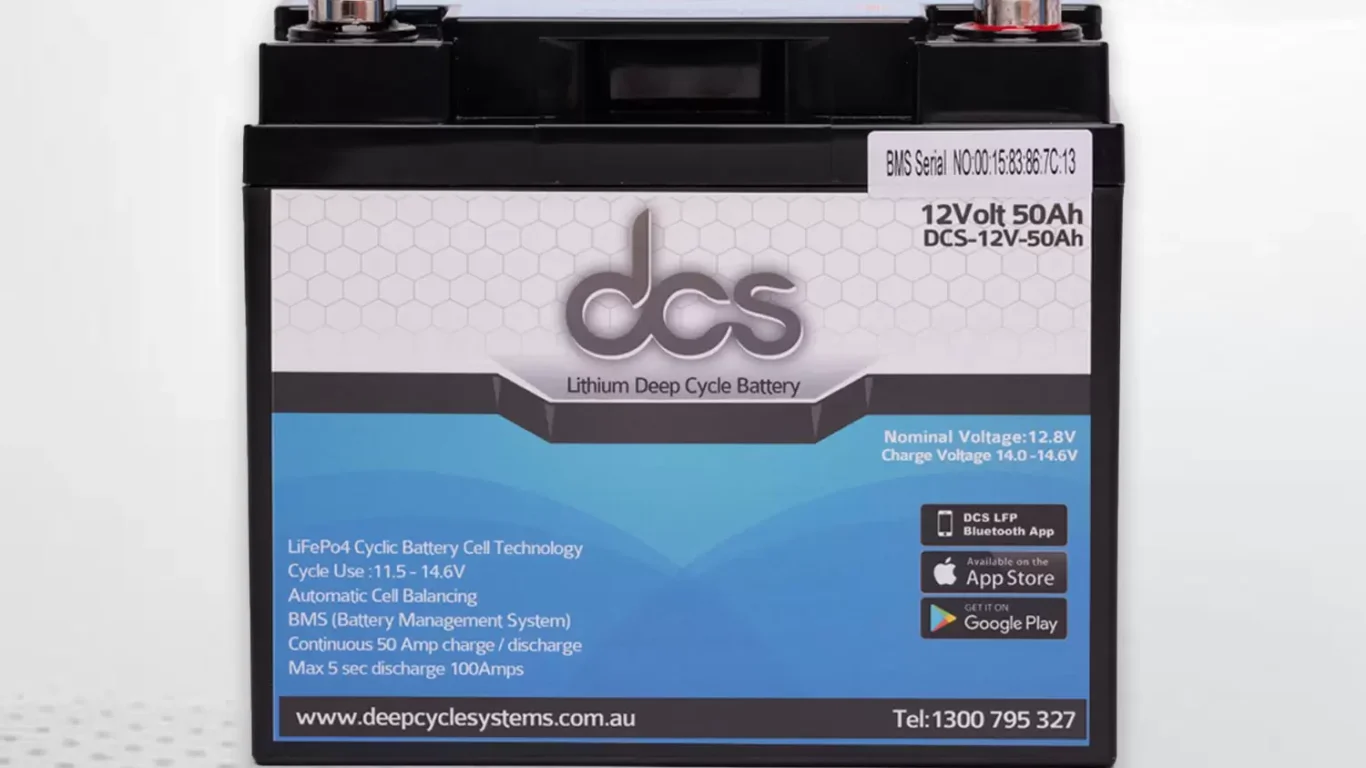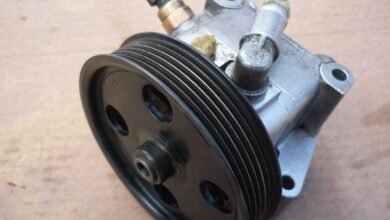The Power: Ways to Improve your 200 Amp Lithium Ion Battery

Are you looking to improve the performance and longevity of your 200-amp-hour lithium battery? Whether you are using it for your RV, boat, solar power system, or any other application, mastering the power of your battery is crucial for maximizing its efficiency. In this blog post, we will explore various tips and techniques to enhance the performance and extend the life of your 200 Amp Lithium Ion Battery.
Understanding Your 200 Amp Hour Lithium Battery
Diving into the intricacies of a 200 amp-hour lithium battery illuminates why it is a preferred choice for high-capacity energy storage needs. This type of battery, leveraging lithium-ion technology, distinguishes itself by providing substantial power in a relatively compact and lightweight package. Its application spans various demanding environments, from the mobility offered in electric vehicles to the resilience required in solar power storage solutions.
At the core of its advantage, the lithium-ion chemistry within these batteries affords them a superior energy density compared to traditional lead-acid counterparts. This means that a 200 amp-hour lithium battery can store more energy for the same physical size, making it an ideal candidate for applications where space and weight are critical considerations. Additionally, these batteries boast a longer cycle life, often capable of several thousand charge and discharge cycles before significant capacity degradation occurs. This longevity is a testament to the robustness of lithium-ion technology, offering users a reliable power source over an extended period.
Understanding the operational parameters of your 200 amp-hour lithium battery, including its charge and discharge rates, voltage range, and energy capacity, is pivotal in optimizing its performance. By familiarizing yourself with these aspects, you can better tailor your usage and maintenance practices to align with the battery’s capabilities and limitations. This knowledge serves as the foundation for implementing effective strategies to enhance battery efficiency, safeguard against premature wear, and, ultimately, harness the full potential of your energy storage solution.
Optimal Charging Practices
Optimal charging practices are crucial for sustaining the health and efficiency of your 200 amp-hour lithium battery. Employing a charger tailored for lithium-ion batteries is imperative, as these are designed to accommodate the specific voltage and current requirements, ensuring safe and efficient charging. It’s also vital to adhere to the recommended charging parameters set forth by the manufacturer, as straying from these can lead to suboptimal performance or even damage to the battery.
Temperature plays a significant role during the charging process. Charging your battery in too hot or cold conditions can adversely affect its health. Ideally, charging should occur at room temperature or within a controlled environment within the manufacturer’s specified temperature range. This mitigates the risk of temperature-related damage and promotes longevity.
Moreover, it’s essential to monitor the charging process, avoiding the pitfalls of overcharging and undercharging. Overcharging a lithium battery can lead to overheating, potential swelling, and a lifespan reduction. Conversely, consistently undercharging your battery may result in incomplete cycling, which can degrade its capacity over time. To circumvent these issues, it’s advisable to utilize a smart charger that automatically ceases charging once the battery reaches full capacity.
By embracing these optimal charging practices, you are safeguarding the integrity of your 200 amp-hour lithium battery, optimizing its performance, and extending its usable life span.
Effective 200 Amp Lithium Battery Management Systems (Bms)
Implementing a sophisticated 200 Amp Lithium Battery Management System (BMS) is paramount in maximizing the health and efficiency of your 200 amp-hour lithium battery. A BMS diligently oversees the performance of each battery cell, ensuring it operates within its optimal parameters. This real-time monitoring includes critical functions such as voltage regulation, temperature control, and cell balancing. Cell balancing is particularly vital as it ensures all the cells in the battery discharge and charge even, preventing any single cell from overexerting itself, which could lead to premature failure.
The integration of a BMS into your battery setup significantly enhances its safety by preemptively identifying potential faults like overcharging or deep discharging. These can pose risks not only to the battery’s lifespan but also to user safety. By addressing these issues early, the BMS helps avert damage and extend the battery’s operational life.
Additionally, a BMS can provide valuable data on the battery’s health and performance, enabling more informed maintenance decisions. It can alert users to deteriorating conditions before they become serious problems, facilitating timely interventions that maintain the battery’s performance and reliability.
For those looking to harness the full capabilities of their 200 amp-hour lithium battery, investing in a BMS with advanced features and ensuring its proper calibration and maintenance is indispensable. This smart system is your first line of defence in protecting and optimizing your battery investment, ensuring that it effectively meets your energy needs.
Temperature Considerations
Temperature Sensitivity of Lithium Batteries:
Lithium-ion batteries are sensitive to temperature extremes, and operating or charging them outside their recommended ranges can have adverse effects.
Effects of High Temperatures:
Exposure to high temperatures can accelerate battery degradation, leading to diminished capacity and a shortened lifespan.
Effects of Low Temperatures:
Low temperatures can increase internal resistance and decrease energy output, making the battery less efficient.
Mitigation Strategies:
\Store and operate the battery in an environment within the safe temperature zone specified by the manufacturer. Consider insulation or ventilation in vehicles or setups prone to temperature fluctuations. Explore temperature management solutions like heating pads or cooling systems for extreme conditions.
Active Temperature Monitoring:
Monitor the battery’s temperature during charging and discharging to gauge its health and efficiency.
Regular Maintenance and Monitoring
Engaging in consistent maintenance and vigilant monitoring is indispensable to sustaining the peak performance of your 200 amp-hour lithium battery. This regimen includes periodically inspecting the battery for any signs of wear, tear, or external damage that could compromise its functionality. Ensure the battery is kept in a clean, dry environment to prevent potential short circuits or corrosion.
Another facet of proper battery care involves maintaining adequate ventilation around the battery to avoid overheating, which can significantly impact its efficiency and lifespan. It is equally important to track the battery’s performance metrics regularly. This means keeping an eye on the charge levels, observing any fluctuations in voltage, and noting changes in capacity over time. Such diligent observation helps identify potential issues before they escalate, allowing for timely corrective actions.
Using tools and technologies designed for battery diagnostics can provide a more in-depth insight into the battery’s condition and performance. Devices that measure impedance, for example, can offer valuable data on the health of the battery cells, enabling more precise maintenance interventions.
Engaging in these maintenance and monitoring practices forms a critical part of the overall strategy to maximize the operational life and efficiency of your 200 amp-hour lithium battery, ensuring it continues to perform reliably across its service life.
Maximizing Battery Life through Usage Patterns
Minimize Deep Discharges:
Frequent deep discharges can strain battery cells, diminishing overall lifespan. Maintaining the battery between 20% and 80% state of charge helps mitigate stress and preserve battery health.
Avoid Excessive Current Draws:
Avoid exposing the battery to current draws that exceed its maximum discharge rate to prevent overheating and accelerated wear.
Judicious Usage Management:
Carefully manage how and when the battery is used, especially in applications demanding significant power, to influence longevity and efficiency positively.
Combined Maintenance Practices:
Combine judicious usage management with other maintenance and care practices to ensure the battery maintains its capacity and provides reliable power over its intended lifespan.
Top of Form
Preventative Measures to Extend 200 Amp Hour Lithium Battery Life
Incorporating a few preventative measures into your routine can significantly safeguard the lifespan and efficiency of your 200 Amp Hour Lithium Battery. One key strategy involves avoiding prolonged storage under extreme states of charge. Batteries left in a fully charged state for an extended duration may experience accelerated degradation, while those stored fully depleted risk entering a state from which recovery is difficult or impossible. Striking a balance, aiming for a storage charge level of around 50%, can help preserve battery integrity during periods of inactivity.
Protection against physical harm is also paramount. Ensure the battery is mounted securely to minimize vibrations and shocks that can disrupt internal components and lead to premature failure. Additionally, be mindful of environmental conditions. Excessive moisture can lead to corrosion, while direct sunlight can cause overheating. Store and use the battery in environments that shield it from such extremities.
Adherence to manufacturer recommendations for storage and operational practices cannot be overstressed. Each battery is designed with specific tolerances in mind, and operating outside these parameters—even inadvertently—can diminish performance and lifespan. By staying informed and observant and adopting these preventative steps, you can help ensure your 200 amp-hour lithium battery remains a dependable power source for as long as possible.
Conclusion
Embracing the guidelines and strategies outlined in this article empowers you to significantly enhance both the efficiency and the lifespan of your 200 Amp Lithium Ion Battery. Commitment to ongoing maintenance, adopting optimal charging practices, and understanding the operational nuances of your battery are pivotal steps toward achieving superior performance. By adjusting usage patterns and incorporating preventative measures, you create a robust framework that ensures your battery delivers reliable power while standing the test of time. Leveraging advanced tools such as a sophisticated Battery Management System further secures your investment, offering peace of mind through enhanced safety and performance monitoring. With a proactive approach to battery care, you position yourself to make the most of this powerful energy storage solution, supporting your energy needs reliably into the future.
FAQs
Q: Is it possible to overcharge my 200 Amp Lithium Ion Battery?
A: Overcharging a 200 Amp Lithium Ion Battery can adversely affect its longevity and functionality. It’s essential to employ a charger compatible with lithium batteries and adhere to the charging instructions provided by the manufacturer to prevent overcharging.
Q: How frequently should I check on my 200 amp hour lithium battery?
A: Consistent monitoring is key to maintaining the optimal health of your battery. It’s advisable to inspect the battery for any signs of physical damage periodically, keep track of the voltage levels, and monitor its temperature during use to ensure everything is functioning within safe parameters.
Q: Can extreme temperatures influence the performance of my 200 amp hour lithium battery?
A: Absolutely; operating your battery outside its recommended temperature range can significantly impact its performance and reduce its service life. Excessive heat and severe cold can harm the battery, making maintaining an environment that supports optimal operating temperatures crucial.
| Related Business Listings |
| Contact Directory |
| Local Business Profiles |




